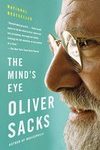The historical background & emerging recognition
Though difficulties in face recognition were noted over a hundred years ago, understanding of prosopagnosia is still unfolding.
History of prosopagnosia (with thanks to Oliver Sacks)
- 1790s Franz Joseph Gall, anatomist, proposed that mental functions arose from the brain, rather than from the soul, heart or liver
- 1865 Paul Broca established that specific areas of the brain were linked to specific neurological and cognitive functions
- 1872 Hughlings Jackson described a clinical case of specific visual agnosia for faces and places
- 1947 Joachim Bodamer, a German neurologist, coined the term ‘prosopagnosia’ to describe three patients with difficulty recognising faces, but with no other visual processing difficulties – the result of head injury (acquired prosopagnosia)
- 1955 Christopher Pallis, an English neurologist, documented a patient’s experience (recorded in a diary) of the onset of prosopagnosia following a stroke
- 1980s The advent of CT and MRI scans, backed up earlier autopsy findings, of damage within the “fusiform face area” of the brain in individuals with acquired prosopagnosia
- 1990s Developmental (or Congenital) Prosopagnosia, was first recognised as a specific neurological deficit present from childhood and often occurring in a number of members of the same family
- 1999 Brad Duchaine and Ken Nakayama started to use the internet to seek out individuals with long term face recognition difficulties, and research from this point has continued to grow and spread
Oliver Sacks (neurologist and face blind himself) gives an overview of developments in the field of prosopagnosia research in the chapter Face-Blind in ‘The Mind’s Eye’. He provides a layman’s guide to the neuroscience findings and debates that have helped to form our understanding of prosopagnosia to date.
Recognition
Research to date has been mainly been within the field of neuroscience.
It was only in 2014 that the NHS added ‘prosopagnosia’ to ‘NHS Choices’ and in 2015 it was added to the list of long-term conditions that can be coded on to patient’s notes, so awareness amongst health professionals is still in its infancy.
While awareness of the condition is growing there is a long way to go in terms of formal recognition and acknowledgement of its prevalence. This is something that Face Blind UK and others are campaigning to achieve. If you can help us to spread the word through talks, interviews or in the media, please contact us.

